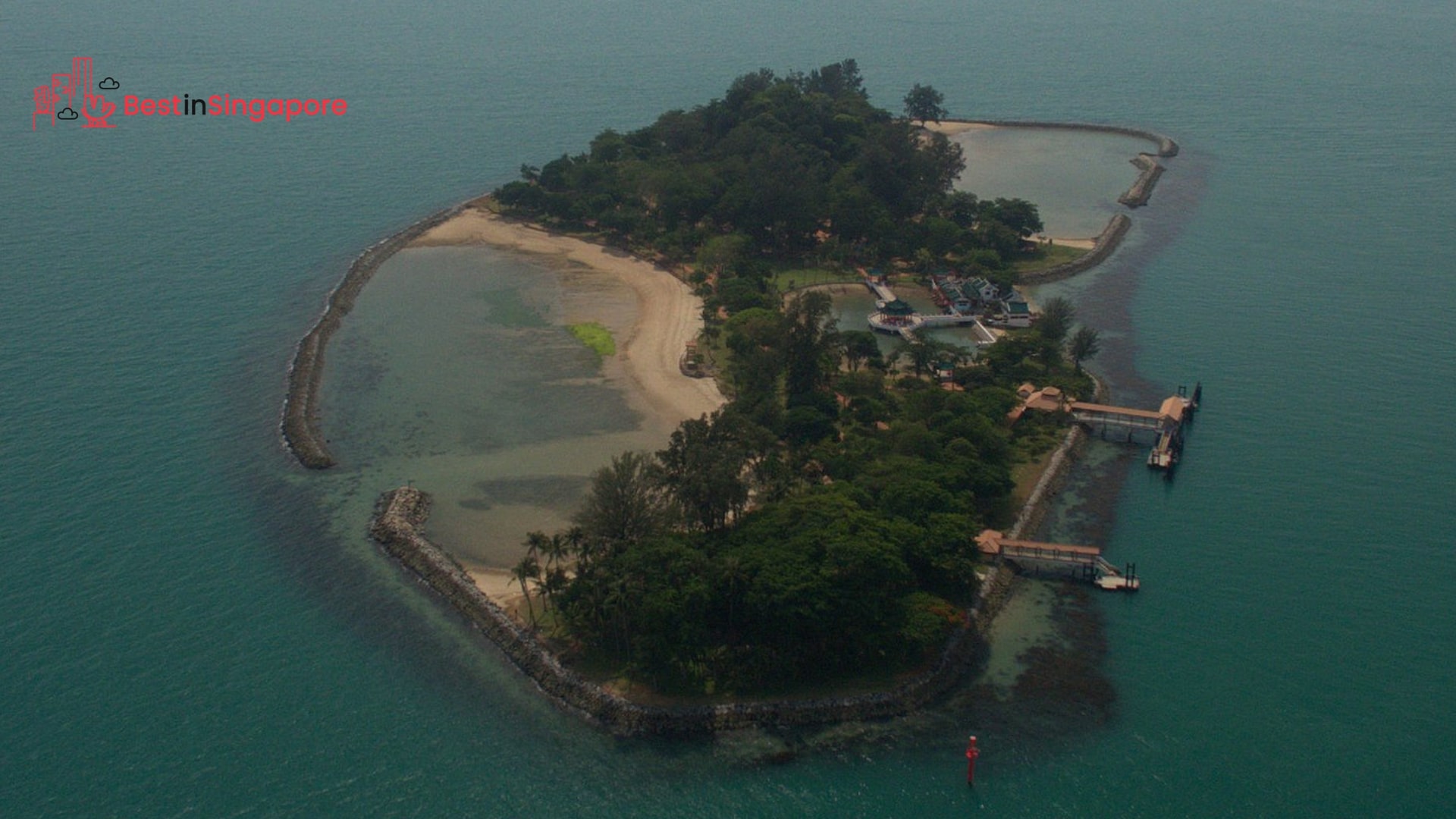Island of Pilgrims and Tortoises: A Guide to Kusu Island
This may come as a shock to some people, but Singapore isn’t just made of one island. There are several islands off the coast of the mainland that fall under Singaporean jurisdiction, and one of them is Kusu Island, located south of Sentosa.
Kusu Island is part of the Southern Islands, and it attracts quite a lot of interest because it’s primarily known as an island of pilgrimage for Malay and Chinese devotees. It also has a white-sand beach, perfect for tourists who want to swim and snorkel in peace.
If visiting Kusu Island is on your bucket list, then be sure to read this article and use it as your guide.
Things to Know
History and Background
Kusu Island, which literally translates to “Tortoise Island,” has a fascinating story. Legends say that two sailors—a Malay and a Chinese—got shipwrecked in the waters near the island, and to save them, a tortoise transformed itself into a giant island.
The two sailors were ever so grateful to the tortoise that they decided to return to the island every year to give their thanks. This tradition caught on until several devotees erected their own temples and sacred kramats (sacred Malay shrines).
Now with the presence of the temples and shrines, Kusu Island has become a place of pilgrimage for the religious Chinese and Malay people. In fact, there’s a Kusu season when pilgrims visit: it’s on the ninth month of the lunar calendar.
How to Get There
Riding a ferry is the only way to get to Kusu Island. Currently, there are two companies that offer ferry rides to Kusu Island—Marina South Ferries and Island Cruise—and you can find them in Marina South Pier.
Ticket prices usually cost S$15, and that already includes a stop at St. John’s Island, which is another one of the Southern Islands. So, you can pay a visit to two islands for that price!
Best Time to Visit
I believe that the best time to visit Kusu Island is during the Kusu season, which is the ninth month of the lunar year. In the Gregorian calendar, this translates to either September or October; to be sure, check the lunar calendar before your visit.
The reason for this is that the island becomes active during the Kusu season. This allows you to experience the pilgrimage with other people.
It also helps that the Food Center is open during this period.
That said, if you don’t like being surrounded by crowds, I suggest coming to the island during the other months instead. This way, you can explore everything in peace.
Just keep in mind that services like the Food Center won’t be open.
Important Things to Keep in Mind
One thing you should keep in mind if you want to visit Kusu Island is that this destination is only good for day trips. Overnight stays are not allowed here; the same thing goes for camping.
Additionally, you can’t bring pets to the island. So, if you’re really eager to visit Kusu Island, you have to leave your furry friends behind.
What to Do
Visit a few Chinese and Malay temples
Since Kusu Island is known for being a pilgrimage destination, it’s no shock that one of the best things to do here is to visit the temples and shrines. It’s even better if you visit during the Kusu season so you can experience this tradition with devotees.
Here are the temples that you can find and visit on Kusu Island.
Da Bo Gong Temple
Also known as the Tua Pek Kong Temple, Da Bo Gong Temple is arguably the island’s most popular temple. It’s located right by the jetty, and it also has a distinguishable architectural design: the whole building is painted bright red and green.
This temple houses many deities, but the main ones are Da Bo Gong or Tua Pek Kong, (the Taoist god of prosperity), and Guan Yin (the god of mercy from Chinese mythology).
Pilgrims here are mostly Taoists, Buddhists, and Confucians, and they pray for prosperity and longevity.
Another highlight is the lotus-shaped wishing well located near the heart of the temple. As you can guess, this is where people make a wish and toss a coin.
Even if you’re skeptical, why not try it for yourself? You never know what’s going to happen.
Kusu Kramats
While Da Bo Gong Temple is situated near the jetty from which you land, the Kusu Kramats are on top of a hill. So, you’ll have to climb hundreds of steps (152 to be exact) to reach these shrines—a good opportunity to work out!
The Kusu Kramats are three shrines constructed in honor of a deeply religious family who lived in the 19th century. Because of the strong family themes, these shrines are where people go to pray for marriage, fertility, good health, and harmony.
Do take note that the Kusu Kramats caught on fire in 2022. So, currently, they’re closed for restoration until further notice.
Hang out with hundreds of tortoises at Tortoise Sanctuary
Kusu Island literally means Tortoise Island, so it’s not a surprise that there’s a place that honors the name. The Tortoise Sanctuary is a sunken concrete pit on the ground where hundreds of tortoises roam around, and it has to be my favorite place on Kusu Island.
There are many breeds of tortoises here, and I find it relaxing just watching them take little steps. All of them have different fascinating shell patterns!
When visiting, just keep in mind not to enter the main enclosure. And though you can interact with the tortoises, avoid touching them.
Swim and snorkel in the clear, blue sea
Kusu Island isn’t really a tourist magnet, and that’s a good thing because the beach here is untouched and pristine. Not to mention you can also enjoy a peaceful time just sunbathing on the sandy shores or swimming in the sea.
To make things better, the waters on Kusu Island are teeming with life, thanks to the marine biodiversity conservation efforts of the Singaporean government. Because of this, you might want to try snorkeling to check out the marine life up close.
You can bring your own snorkeling gear and go snorkeling whenever you want. But you can also choose to book a snorkeling session instead, which will allow you to rent gear and experience snorkeling on each Southern Island.
If you don’t like snorkeling, you can just wait until it’s low tide. The swimming lagoon on Kusu Island is an intertidal zone, which means that during low tide, there’s very little water; this allows you to see all the flora and fauna in the lagoon.
Enjoy a relaxing picnic
Another thing I love about Kusu Island is that there are many pavilions and benches. So, you can definitely host a fun picnic here with your loved ones!
Personally, I prefer bringing my own picnic blanket because lying down on the grass feels much more freeing. I also love picking a spot by the beach because I’ll be able to enjoy the view of the sea and the Singapore skyline in the distance.
Since there are no stores and restaurants on Kusu Island, you have to bring your own food. And do keep an eye out for your food because there are ants here as well as wild monkeys.
Where to Eat
Kusu Island Food Center
While it’s true that there are no restaurants on Kusu Island, there is a food center that’s basically like any other hawker center you’d find on the mainland. The only downside is that the Kusu Island Food Center only operates during the Kusu season.
The Kusu Island Food Center has 18 stalls, but even during the Kusu season, only a few are open. The dishes served here are your typical hawker meals, such as char kway teow and fried oysters.
For drinks, you can order a cup of kopi (either hot or iced). They also have other options, such as coconut drinks, milo drinks, and tea.


